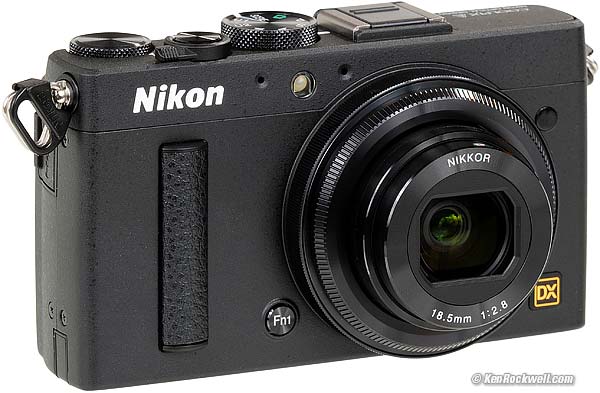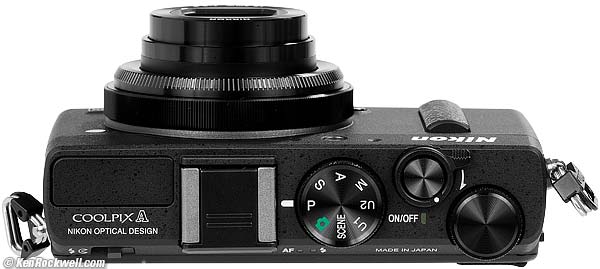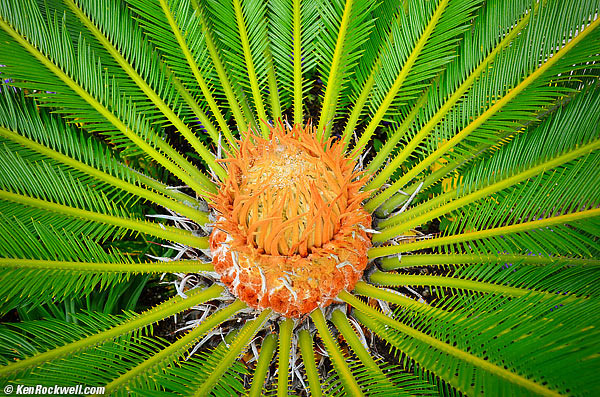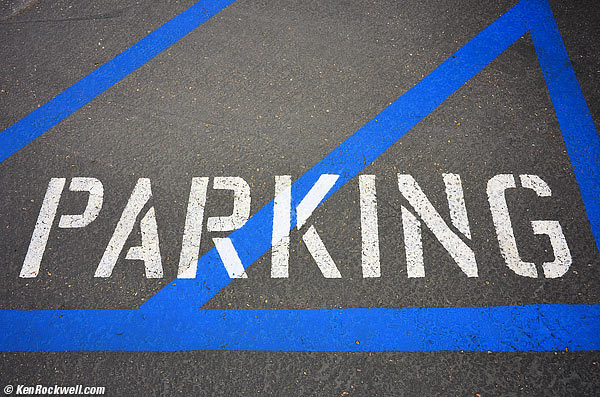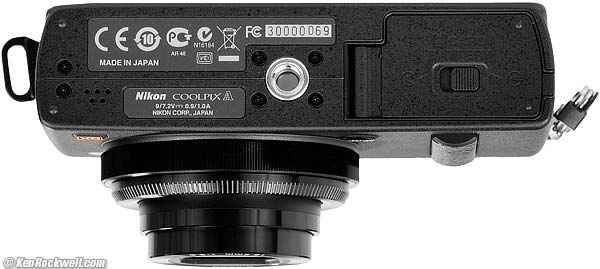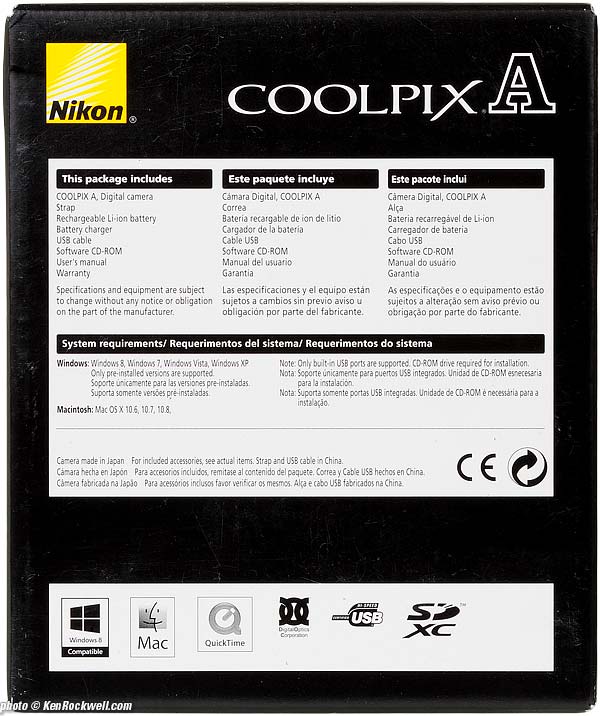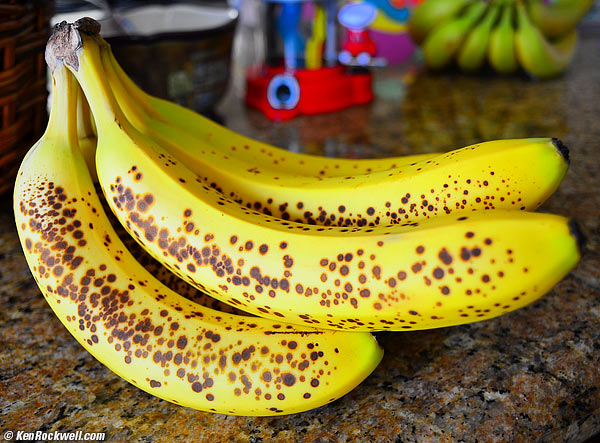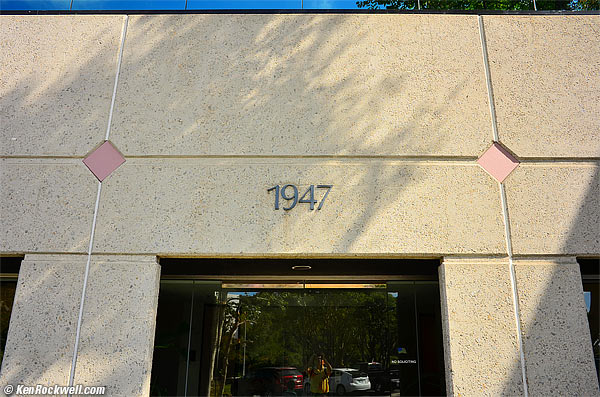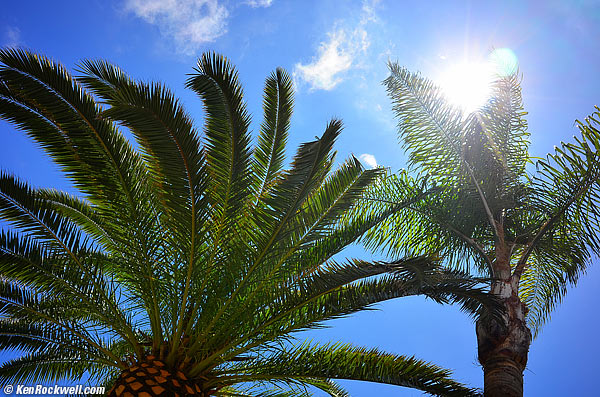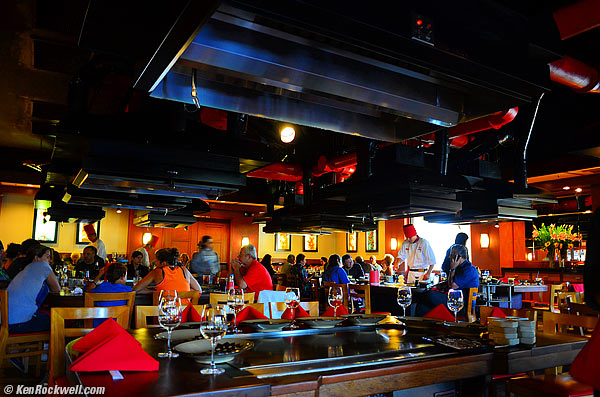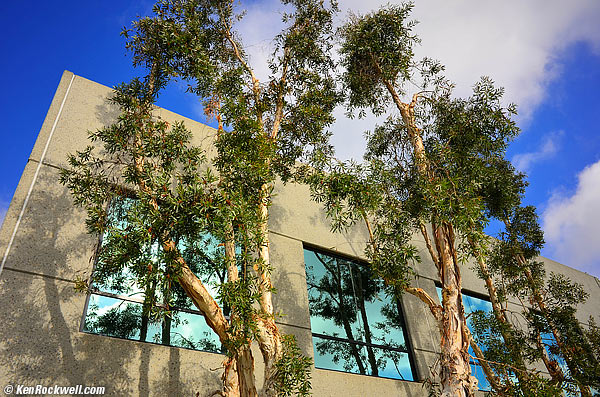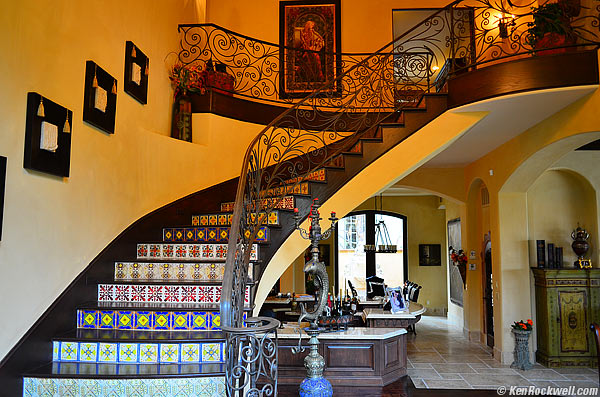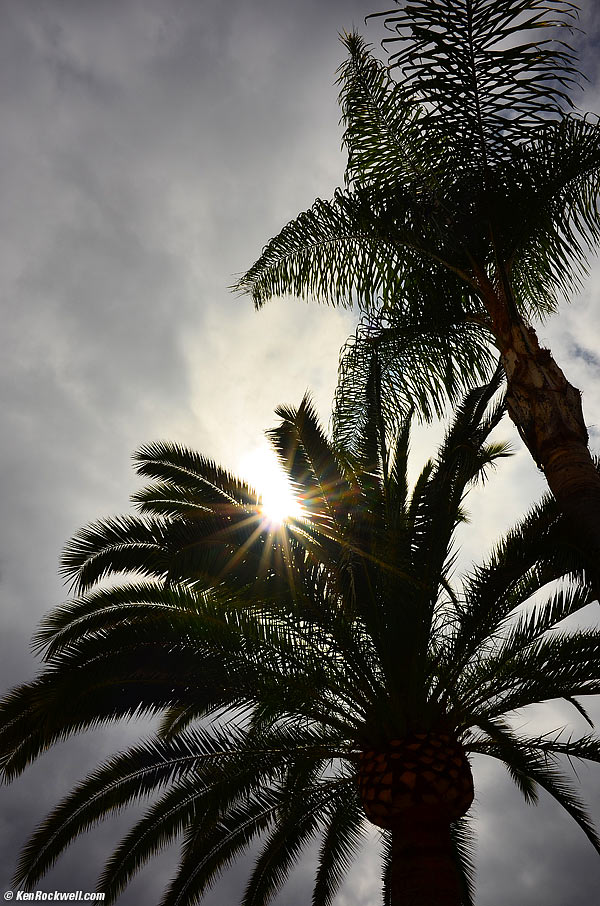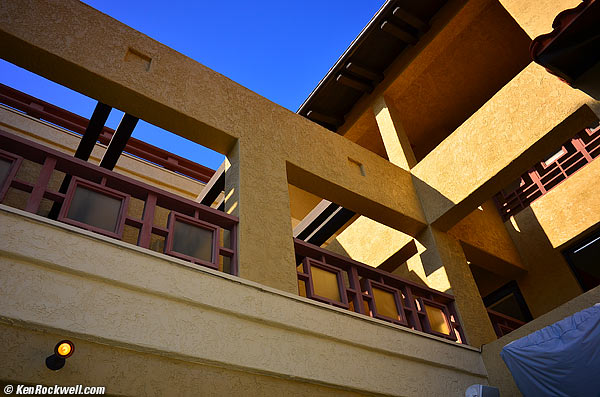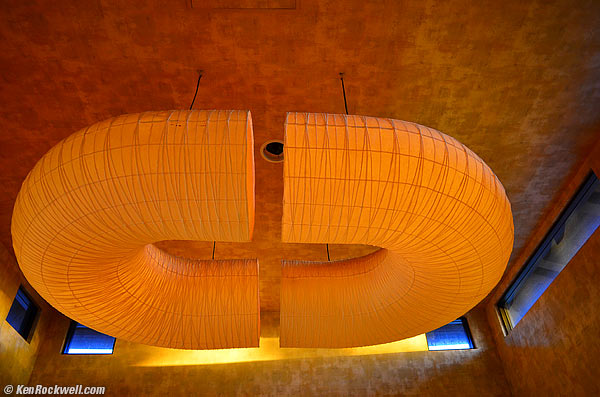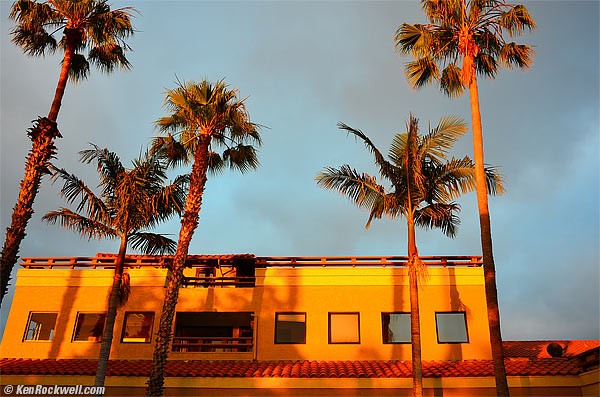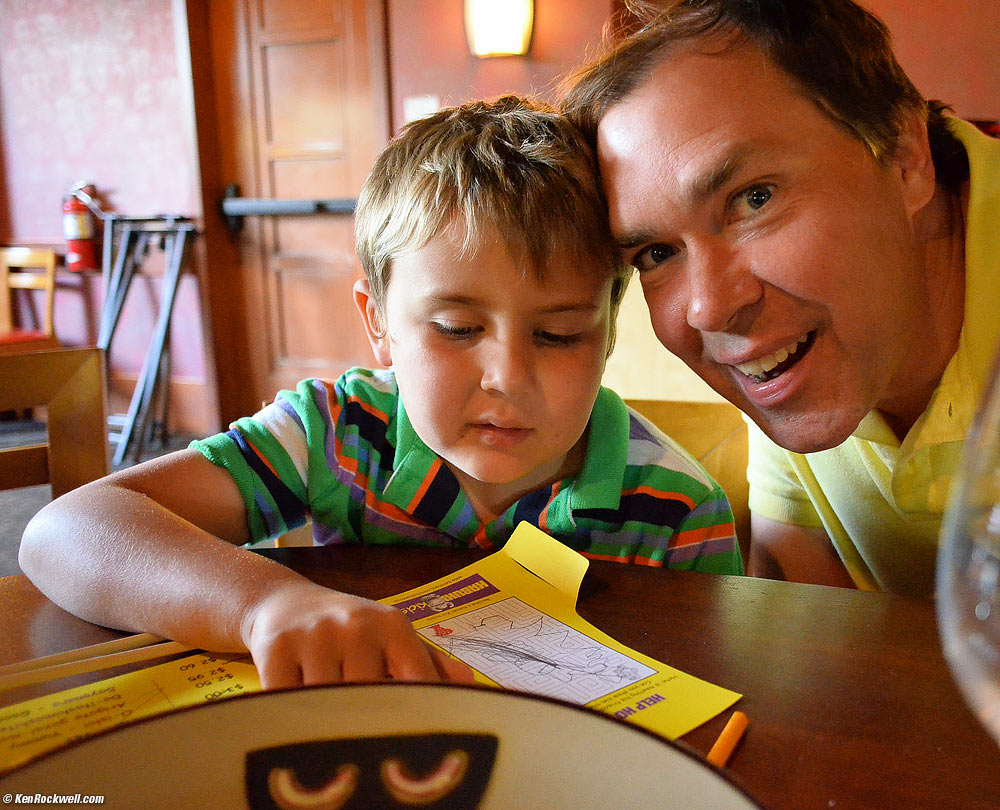Home Donate New Search Gallery Reviews How-To Books Links Workshops About Contact
Nikon Coolpix A
16 MP DX Point-and-Shoot (2013-)
© 2013 KenRockwell.com. All rights reserved.
Intro Specs Performance Compared Usage Recommendations More
Nikon Coolpix A (10.5 oz./298 g. with battery and SD card, comes in black or silver, 16 MP DX sensor, 18.5mm f/2.8 (28mm equiv.) fixed lens, about $1,100). enlarge. I got mine at Adorama; Amazon is also a great place to get it. My biggest source of support for this free website is when you use those or any of these links when you get anything, regardless of the country in which you live — but I receive nothing for my efforts if you buy elsewhere. I'm not NPR; I get no government hand-outs and run no pledge drives to support my research, so please always use any of these links for the best prices and service whenever you get anything. Thanks for helping me help you! Ken.
Rear, Nikon Coolpix A. enlarge.
Top, Nikon Coolpix A. enlarge.
Sample Image Files
04 June 2013: Nikon Coolpix A, f/5.6 at 1/200 at ISO 100. © Camera-original LARGE BASIC JPG file. Of course most of the green isn't sharp; it's out of focus.
Parking: 04 June 2013. Nikon Coolpix A, f/5.6 at 1/250 at ISO 100. © Camera-original LARGE BASIC JPG file.
June 2013 Nikon Reviews Nikon Lenses All Reviews
Introduction top
Intro Specs Performance Compared Usage Recommendations More
| Adorama pays top dollar for your used gear. |
The Nikon Coolpix A makes it super fast and easy to get technically great photos. It's a fantastic little camera that handles super-fast and just shoots, just like a DSLR or even faster, and the resulting images are at least as good as from a DSLR. You can't understand from reading a review just how fast and light is this camera; the Coolpix A just shoots fast, and the results are perfect.
The reason there are so many full-size sample images in this review isn't because I put any work into it; all these shots were made in a single 24-hour period. The Coolpix A is just so proficient that I got this many decent photos to share without even trying.
This Coolpix A's images are even better than DSLR quality because the Coolpix A's lens is better than the lenses usually used on DSLRs. The image sensor is the same 16 MP DX sensor used in DSLRs, and so is most of the firmware; the Coolpix A's menus work almost exactly like any other Nikon DSLR.
The Coolpix A also has plenty of buttons to program, so it just goes. I love this little thing far more than any of its specifications would ever imply, for instance, it has no VR, and its lens won't even zoom, however it excels because it handles super-fast and just shoots, just like a DSLR or even faster.
The Coolpix A has a 16 x 24mm DX DSLR sensor, so it works great in low light without flash — and it has a great built-in flash for daylight fill.
Better than a DSLR for people photos, I set autofocus to Face Recognition, and my Coolpix A magically finds and tracks faces anywhere in the frame. DSLRs only focus in the middle of the photo where faces often aren't, and require a lot more fiddling to get their AF systems to wake up and track. The Coolpix A just finds the faces and focuses. I wish all cameras were this fast!
For photos of places and things, the Coolpix A likewise astounds with its ultrafast operation. Autofocus, settings, playback, everything just goes fast. Everything just happens as it should, faster than it does on the far bigger and more expensive Sony A99, and the technical quality is a bit better than Nikon's small DSLRs because of the fantastic lens.
The Coolpix A really does run at 4 frames per second! I shoot in the Continuous shutter mode, and I have to be careful that I don't expend a few rounds when all I really wanted was one frame. This is great for people photos; grab several frames and pick the best one.
Compared to its competition, the Fuji X100S, the Coolpix A has a slow (f/2.8) lens that's too wide for general use and it has to motor in and out, but tough, the Coolpix A works so well and so fast it's worth a look. If it weren't for the X100S, the Coolpix A would be a no-brainer.
Good
Everything runs FAST!
Menus and everything almost the same as every Nikon DSLR. If you can shoot a Nikon DSLR, you already know how to shoot the Coolpix A.
U1 and U2 camera-state recall settings on the top dial for instant ability to recall all your camera settings for two kinds of conditions. I set U2 for photos of people (STANDARD Picture Control, Face Detect auto focus and small image size), and U1 for photos of places and things (VIVID +3 Saturation Picture Control, regular AF and large image size).
Super-smart Auto ISO lets me program my Coolpix A to pick the perfect ISO automatically for every situation. For U1 I set ISO 6,400 max and 1/15 slowest speed, and for U2 (people), I set 1/125 minimum speed.
Great AF system; set to Face Recognition and it really does find and focus on faces faster than I could find them.
Easy-to-use power switch always at your fingertip around shutter button.
Easy mechanical flash on/off switch works instantly with a fingertip.
Great rubber grip; this grip and smart layout make the Coolpix A a joy to shoot with one hand.
Excellent flash exposure.
1/2,000 flash sync for great range for fill-flash in daylight.
Hot shoe for use with all recent Nikon flashes with full automation.
7-bladed diaphragm for great sunstars.
Stereo microphone for video.
Made in Japan, not offshored like most of Nikon's cameras and lenses.
Extremely efficient JPG coding. BASIC JPGs are 482 kB median file size in SMALL and only 1.9 MP in LARGE — and they look great. All the sample images in this review are BASIC JPGs. (You can set them bigger if you prefer; NORMAL, not BASIC, is the default)
Bad
Poor close-focus ability sometimes gets in the way of a good picture. The regular AF mode only focuses to 1.7 feet (0.5m) and doesn't warn me if I'm too close, simply giving me out-of-focus photos and dumb looks instead. If I choose the Macro mode it focuses continually up to 0.33 feet (0.1m), but now AF often takes too long as the Coolpix A searches the entire range for the subject. This is a penalty for a big sensor.
No viewfinder; has to be held at arm's length to shoot just like an iPhone — but the Coolpix A has a smaller, dimmer screen! You may have to take the strap from around your head to get the camera far enough away to shoot well.
Lens has to motor in and motor out before and after each shot, just like every other point and shoot. It's so fast it never is noticed, but these mechanisms are notoriously unreliable.
Missing
No viewfinders of any kind; just like an iPhone. (Clip-on accessories are dumb and have no electronic indications.)
No zoom; lens is always stuck at its widest setting.
No Vibration Reduction (VR).
No auto brightness control for the rear LCD; too dim to see in direct sunlight.
No diagonal scroll and no one-click ability to zoom all the way in on playback (everything else is the same as DSLR playback).
No Kelvin white balance settings.
No 640 resolution video.
No battery percentage meter or battery shots counter.
No Wi-Fi and no GPS, unless you buy more accessories (WU-1a and GP-1).
Built-in flash won't work as i-TTL Commander.
Extra Features
Full DSLR controls in the menus; White Balance trims and intervalometers for instance.
Specifications top
Intro Specs Performance Compared Usage Recommendations More
Sensor
16 MP CMOS.
23.5 x 15.6 mm (DX).
1.5x crop factor.
Image sizes
4,928 x 3,264 (16MP) native.
Also 3,696 x 2,448 (9MP) and 2,464 x 1,632 (4MP).
Video: 1080 at 29.97p, 25p and 23.976p; 720 at 29.97p, 25p and 23.976p.
ISO
100 ~ 6,400.
ISO 8,000, 10,000, 12,800 and 25,600 are called various versions of "Hi."
Auto ISO programmable with minimum shutter speed and maximum and minimum range of ISOs.
Lens
Permanently attached motorized collapsible lens.
7 elements in 5 groups.
7-blade diaphragm
Close Focus Distance
1.7 feet (0.5 meters).
0.33 feet (0.1 meters) in Macro mode.
Finder
NONE.
Live View
That's all the Coolpix A does, exactly like an iPhone.
Light Meter
Matrix, Center-weighted and spot.
Built-In Flash
Guide Number 21 feet (6 meters) at ISO 100.
Hot Shoe
Works flawlessly with SB-910, SB-900, SB-800, SB-700, SB-600 and SB-400.
Flash Sync Speed (maximum shutter speed with flash)
1/2,000!
Shutter
30s - 1/2,000, plus bulb to 30 minutes.
Remote control
ML-L3, also allows Time exposures to 30 minutes.
MC-DC2 cord.
Burst Depth
About 50 frames.
Frame Rate
4 FPS, both specified and confirmed.
LCD
Bright, sharp and colorful 3" diagonal, 4:3 aspect ratio.
640 x 480 RGB pixel resolution (921,000 dots).
Data Storage
One SD card.
Power
EN-EL20 Li-Ion battery.
Rated Shots
Only 230.
Quality
Bottom, Nikon Coolpix A. enlarge.
Made in Japan.
Environmental
0 to 40°C (32 to 104°F).
85% RH maximum, no condensation.
Size
2.6 x 4.4 x 1.6"
64.3 x 111 x 40.3mm.
Weight
10.525 oz. (298.3 g.), actual measured with battery and SD card.
Nikon rates it at 10.6 oz (299g).
Included
Nikon Coolpix A Box. bigger.
Nikon Product Number
26423.
WU-1a Wi-Fi adapter.
GP-1 GPS receiver.
DF-CP1 Optical Viewfinder.
UR-E24 Adapter Ring and HN-CP18 Metal Lens Hood.
SB-910, SB-900, SB-800, SB-700, SB-600 and SB-400 flashes.
Announced
04 March 2013, 11PM NYC time.
Price, USA
$1,100, June 2013.
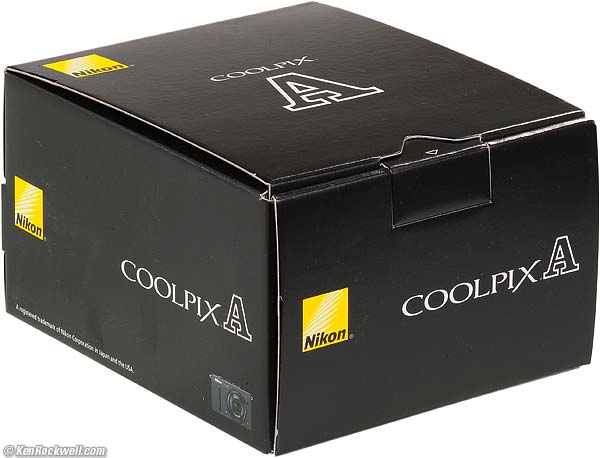
Nikon Coolpix A Box.
Performance top
Intro Specs Performance Compared Usage Recommendations More
Overall
I'm impressed: DSLR quality or better in a tiny package that really works fast!!!
Autofocus
Autofocus is fast and sure.
It has a real AF-mode slide switch on the operator's left side.
AF is usually super fast, but if you enable the Macro mode it will often look all over the place more slowly trying to find focus. The bigger lens of the DX-sensored Coolpix A compared to regular point-and-shoots means it has to rack in and out further to focus.
Finder
NONE.
The DF-CP1 Optical Viewfinder is a purely passive finder like the peephole of a disposable camera; there is no communication between this passive finder and the Coolpix A.
Shutter
The shutter release looks, feels and works just like every other point and shoot.
The Coolpix A shutter is nearly silent, and it really does run at 4 FPS. At 4 FPS, few people would know you're rolling because it's so quiet.
The card-write buffer really works, so the Coolpix A never hangs up even if it takes a minute to write dozens of new shots to the card!
Lens
The lens is great; it's always sharp and has no distortion. It has some falloff, as expected for a fixed non-retrofocus wide lens.
As I interpret the performance below, it seems that Nikon opted for an excellent lens so it can skip in-camera corrections, which lets it retain more detail and increase shooting speed and battery life.
The small levels of falloff, lateral color and distortion I see are consistent with an excellent lens' native performance.
Bokeh
Bokeh, the character of out of focus backgrounds, not simply how far out of focus they are, is mediocre.
That's OK because with the slow 18mm lens of the Coolpix A, there is almost never anything out of focus anyway. To get any background out of focus, you need to be focused on something only about a foot away:
Bananas. Nikon Coolpix A, f/3.2 at 1/30 at ISO 100. © Camera-original LARGE BASIC JPG file.
Distortion
1947. Nikon Coolpix A, f/5.6 at 1/320 at ISO 100. © Camera-original LARGE BASIC JPG file.
There is no visible distortion. Even shooting brick walls, it's usually invisible.
For more scientific use, try a correction factor of +0.80 Photoshop's lens distortion filter at 3 meters (10 feet), and +2.0 at infinity.
Falloff
There is the usual cos4 falloff for what I suspect is a conventional non-retrofocus wide lens:
Nikon Coolpix A falloff.
© 2013 KenRockwell.com. All rights reserved.
|
I'm sure this will freak out pixel counters, but it's good for wide angle lenses to have falloff; it adds emphasis.
Flare and Ghosts
There are no significant ghosts or flare. The worst of it, which takes quite a while to try to excite as shot here, is one cyan blob just outside the light source:
Coolpix A flare at f/5.6. bigger.
Here's another torture test: a black restaurant with black ceilings and floors, and windows open to the outside:
Benihana. Nikon Coolpix A, f/2.8 at 1/15 at ISO 450. © Full-resolution LARGE BASIC JPG file.
Lateral Color
There is a tiny amount of yellow-blue lateral color fringing in the farthest corners.
You'll never see it outside the laboratory.
Macro
Because of the larger lens needed for the larger sensor, the macro mode doesn't get very close at all. An iPhone 5 gets closer.
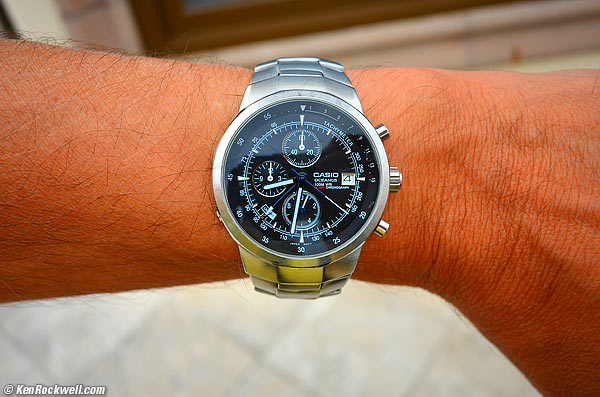
At closest macro distance.
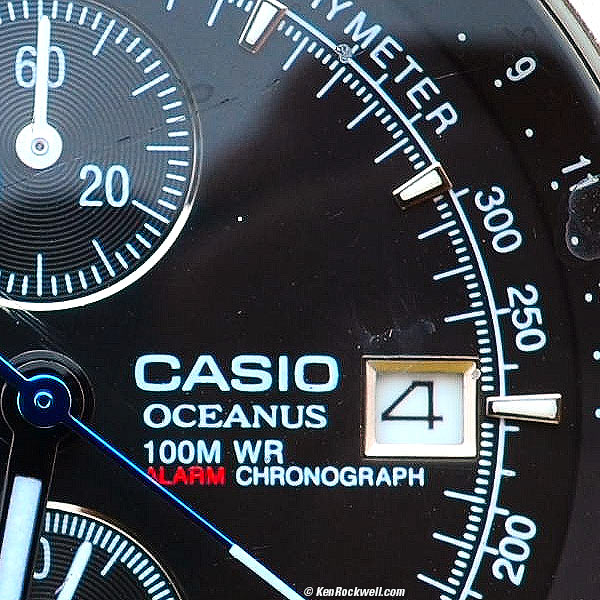
Crop from above image at 100%. If this is 6" wide on your screen, the complete image printed at this same magnification would be 50 x 32." (4 x 3 feet, or 125 x 80 cm.)
It may not get that close, but it is sharp.
Sharpness
Warning 1: Image sharpness depends more on you than your lens.
Warning 2: Lens sharpness doesn't mean much to good photographers.
While amateurs waste time worrying about lens sharpness, pros know that lens sharpness has little to do with making sharp pictures. This said, the Nikon Coolpix A is just about perfect; the only way to make it unsharp is to shoot at apertures smaller than f/8 where diffraction dulls the image.
Eucalypti. Nikon Coolpix A, f/5.6 at 1/640 at ISO 100. © Camera-original LARGE BASIC JPG file.
A fine home. Nikon Coolpix A, f/2.8 at 1/15 hand-held at ISO 160. © Camera-original LARGE BASIC JPG file. Can your DSLR do this wide-open? This is sharper than almost every professional f/2.8 DSLR zoom!
At f/2.8
It's perfectly sharp throughout most of the image.
The farthest corners are only slightly less sharp.
Nikon's 18-55mm zooms can't do this wide-open.
At f/4
It's perfectly sharp throughout most of the image.
The farthest corners are about 90% as sharp as the center.
At f/5.6
It's perfectly sharp throughout all of the image.
f/5.6 is the optimum aperture.
Bravo!
At f/8
f/8 looks the same as f/5.6.
At f/11 and smaller
The image gets progressively softer due to diffraction.
Hallelujah, there are nice 14-pointed sunstars even at moderate apertures:
Nikon Coolpix A Sunstars at f/11. bigger.
Ergonomics
Ergonomics are surprisingly excellent.
There's a nice flash switch that I can flick with a fingertip. I wish all my cameras and SLRs worked this well.
Buttons are all same color; there's no color code for Shooting, Menu and Play modes.
The same dial is often used for shutter and aperture control, making usage less intuitive.
"U1" or "U2" is shown on the LCD when set, but it's so small that it's usually invisible on the LCD.
Silent Modes
All the modes are nearly silent, far more so than any SLR.
Meter and Exposure
Exposure is just about perfect all the time, whoo hoo!
Flash
Flash performance is excellent, both the built-in as well as with an external flash.
Here's an example of using the tiny built-in flash outdoors to light the shadows:
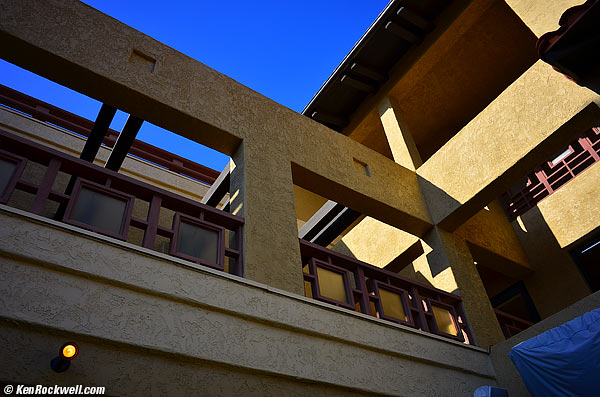
No flash. Nikon Coolpix A, f/5.6 at 1/640 at ISO 100.
With built-in flash. Nikon Coolpix A, f/6.3 at 1/500 at ISO 100. © Camera-original LARGE BASIC JPG file.
Sync Speed is an astonishing 1/2,000, allowing about three times the distance for fill flash in daylight as compared to a DSLR.
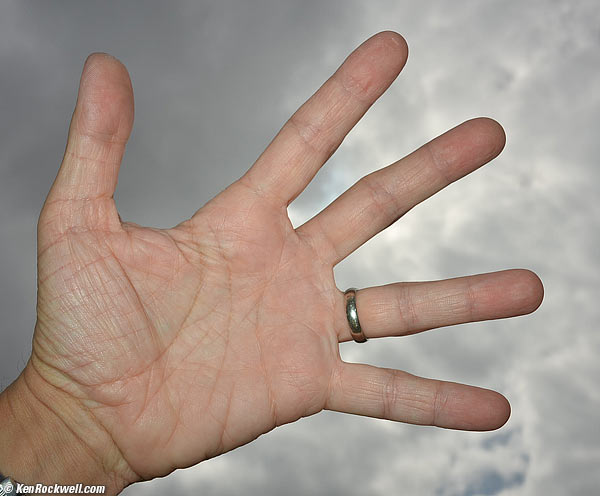
1/2,000 flash sync speed at f/7.1 with flash (all in Program mode automatically) at ISO 100.
If your flash has enough power reserve, you easily can shoot two or more frames at 4 FPS with flash. When your power dies, the EXIF incorrectly reports that flash was used, even if it didn't fire.
Built-in Flash
The built-in works as TTL and as manual.
There is no commander mode.
Exposure and beamspread are fine.
Recycling time is moderate if you're using a lot of power, and fast at close distances.
Hot Shoe
It's a bit silly to use a tiny camera with a big flash, but the Nikon-dedicated hot shoe works perfectly with the SB-910, SB-900, SB-800, SB-700, SB-600 and SB-400 flashes.
I used it with my SB-600, and communication is perfect between the camera and flash, except that the system is so stupid that it tries to set the flash's zoom to cover an 18mm lens - on full-frame! Nikon goofed; flashes ought to zoom to 28mm, not 18mm.
Used with the SB-600 for instance,if you don't have enough power for a shot, the SB-600 blinks with a value for just how many stops less than the desired flash exposure you got. Brilliant; just like with an SLR.
Auto White Balance
Auto White Balance is usually excellent, but if it's not, oddly the final picture may be much worse in difficult conditions than what we saw on the LCD as we were shooting it.
Color Rendition, Tones and Values
Torus. Nikon Coolpix A, f/2.8 at 1/15 at ISO 450. © Camera-original LARGE BASIC JPG file.
Old Customs House, Lahaina. Nikon Coolpix A, f/4 at 1/50 at ISO 100. © Camera-original LARGE BASIC JPG file.
Color rendition seems identical to every other Nikon DSLR with Picture Controls.
If you have a setting you've come to like on another Nikon, set it on your Coolpix A, and you'll get the same look. Bravo!
High ISO Performance
In actual use at high ISOs, the Coolpix A seems much cleaner than the full-frame Sony A99. The Coolpix A looks great at ISO 6,400, while the images from my A99 are already starting to gasp for air with noise and noise-reduction artifacts at ISO 6,400.
Ryan and Dada at Benihana. Nikon Coolpix A, face-control AF pointed at ourselves at arm's length, f/2.8 at 1/125 at Auto ISO 5,000, Athentech Perfectly Clear plug-in.) bigger or full resolution (SMALL JPG).
Television stupor, 04 June 2013. Nikon Coolpix A, f/2.8 at 1/125 at ISO 4,500. © Camera-original SMALL BASIC JPG file.
High ISO performance is the same as Nikon's current DX DSLRs: excellent.
Shot at ISO 6,400, everything looks fine. With an f/2.8 lens, I never had to shoot it any faster.
Mechanics
The Coolpix A is built about as well as a middle of the road Canon Powershot.
The Coolpix A case is mostly metal, and so are most of the buttons and knobs.
The pop-up flash, shutter button and power lever feel like plastic.
The markings are painted, not engraved.
Data
The Coolpix A incorrectly formats cards as "Untitled." They should be titled as something like "COOLPIXA."
JPG coding is extremely efficient. BASIC JPGs have a median file size of 482 kB in SMALL and only 1.9 MP in LARGE — and they look great! All the sample images in this review are BASIC JPGs in either of those sizes.
LCD
The LCD is marvelous indoors, but isn't that bright outdoors, making it nearly impossible to see what you're doing if shooting directly into the sun. It's great indoors. There's no auto brightness control, so it doesn't get any brighter outdoors unless you tweak it manually.
The LCD exaggerates colors; images look more vivid on the Coolpix A's LCD than they will on a calibrated monitor.
The monitor has a 4:3 aspect ratio, meaning that images won't fill the screen unless zoomed. Even then, don't be tricked: the black panel on the back is a bit bigger than the actual LCD image area:
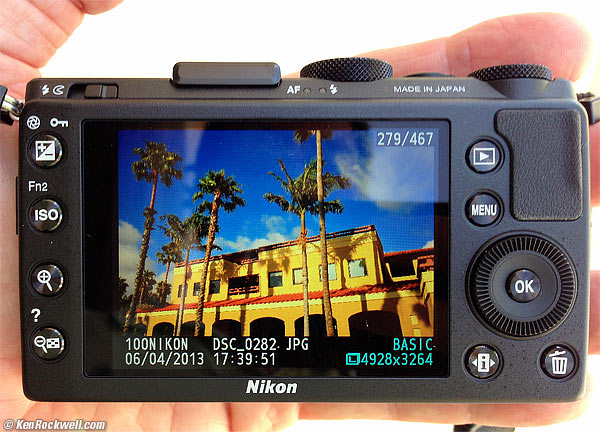
Nikon Coolpix A LCD in shade.
Playback
Playback is great, just like on Nikon DSLRs.
When zoomed, swapping between images is instantaneous for comparing sharpness.
The only gotcha is that there curiously is no diagonal scrolling; you have to go to the side then up or down to see a corner.
Battery and Power
It's better than rated and about the same as every other point and shoot.
I got 386 pictures when I saw the 2/3 battery icon. That usually means I'm just about dead. it's only rated for 230 shots.
You'll get more shots if you use the flash less or take a lot of continuous shots at the same time. You'll get fewer if you always use the flash, use the flash at long distances or do more fiddling than actually taking shots.
The battery goes in quite a few ways, only one of which will go all the way in and actually work.
The charger is great; it has a folding plug. It blinks green while charging and steady green when done.
The manual says that the clock battery is an internal rechargeable that recharges in a day, and is good for two weeks of timekeeping with the usual battery out of the camera.
Compared top
Intro Specs Performance Compared Usage Recommendations More
Versus the World
The Coolpix A is expensive. The D3200 does the same thing for half price; it's just bigger. The Coolpix A demands a premium for its small size.
The Coolpix A has the widest lens. This is bad, because it tends to make the weakest images unless you make a dedicated effort to get closer for each and every shot. See How to Use Wide Lenses for more.
If you want to throw backgrounds out of focus, the faster, longer lens of the X100S or the long end of the zoom of the D3200 will do a much better job. With the Coolpix A, almost everything is always in focus.
The Coolpix A is the only camera here that has to motor its lens in and out, but its so fast it doesn't intrude. Just watch out; these things break often.
Versus the Fuji X100S
Nikon knows the Fuji X100S is the camera to beat. Nikon even went so far as to copy the way the X100S marks MADE IN JAPAN along the rear of the top cover as a feature (both cameras already list this on the sticker on the bottom), and Nikon writes NIKON OPTICAL DESIGN on the left of the top cover to mimic Fuji's FUJINON LENS SYSTEM marking on the same place on the X100S. Why Nikon would copy the X100S which copies the LEICA M3 when Nikon should have styled the Coolpix A to recall the Nikon SP is beyond me.
The X100S is a little bigger and sturdier than the Coolpix A. With the X100S' real knobs and viewfinders, the X100S feels like a real camera while the Coolpix A and its little erectile lens feels like the point and shoot it is.
Technical image quality is similar as far as resolution and noise (grain).
The colors and tones of X100S images favor people, while the Coolpix A looks better for photos of places and things. I have not explored the newly improved Film Simulations of the X100S, which may improve the X100S rendition of places and things.
The Coolpix A requires a lot fewer clicks to get from one place to the next than the X100S. The Coolpix' AF system usually minds itself, while the X100S often needs manual AF zone selection to find people (The X100S has no face recognition for shooting). For people photos, I'm often having to select AF points manually in my X100S, while the Coolpix A selects the faces by magic — instantly.
I love my X100S, and its lens and color palette are much more suited to people photos than the slower, wider lens of the Coolpix A, while the Coolpix A's AF system works much faster and with far less photographer input than required by the X100S.
Your choice is simple: if you shoot from arm's length or are primarily photographing places and things, get the Coolpix A.
If you shoot with a finder or mostly photograph people, get the X100S for its superior skin reproduction and more suitable lens.
If you are always swapping between two kinds of photos, people or things for instance, only the Coolpix A has U1 and U2 instant recall modes on its dial. One flick and I'm there with the Coolpix A, while I'm always having to reset image size and color modes manually on my X100S to optimize for people or thing photos.
If you need face recognition for people photos, sadly only the Coolpix A does it. While my X100S excels for people photos otherwise, I'm always having to move the AF zone selector manually.
If you want rapid-fire 4 FPS for catching action, only the Coolpix A does it well. The X100S has a 6FPS mode, but it names the images with weird prefixes and your computer will file them in weird places.
The X100S looks like an old 35mm camera, so strangers will tend to leave you alone in public. The Coolpix A looks like just another point-and-shoot, so again strangers will leave you alone.
The Coolpix A makes it easy to make loads of great pictures fast, while the X100S is isn't as fast. The Coolpix A makes it so easy that we'll all make a lot of meaningless photos with it; I suspect the X100S forces us to make stronger images.
| Shooting position | Arm's length only |
Held to face or at arm's length |
Arm's length only |
Held to face only |
| Carry position | Shoulder strap or a big, clean pocket. |
Shoulder strap |
Pocket |
Shoulder strap |
| Viewfinders | None |
Optical and electronic |
Not needed |
Optical |
| Wake time to 1st shot | Fast |
Fast |
Fast |
Fast |
| AF speed | Fast |
Fast |
Fast |
Fast |
| Face-Recognition AF | Excellent |
None |
Good |
None |
| Full-Frame AF | Yes |
Yes |
Yes |
No |
| Silent operation? | Almost |
Almost |
Yes |
No |
| Lens always ready to shoot? | No, has to motor in and out |
Yes |
Yes |
Yes |
| Real-World Frame Rate | Fast!!! |
fast enough |
Fast |
Fast! |
| Built-in flash? | Pop-up |
Built-in |
Not really |
Pop-up |
| Flash Performance | Excellent |
Excellent |
dismal |
Very good |
| Lens Speed | f/2.8 |
f/2 |
f/2.4 |
f/3.5-5.6 |
| Equiv. lens | 28mm |
35mm |
33mm |
28-85mm |
| Filter Threads | Needs adapter |
Inverted 49mm |
Not needed |
52mm |
| Regular ISO | 100-6,400 |
200-6,400 |
50-3,200 |
100-6,400 |
| Auto ISO | programmable |
programmable |
Yes |
programmable |
| Aspect Ratio | 3:2 |
3:2 |
4:3 |
3:2 |
| Image Quality | High |
High |
High |
|
| Macro Ability | Fair |
Excellent |
Excellent |
Excellent |
| Video | 1080p Stereo |
1080p Stereo |
1080p mono |
1080p mono |
| LCD | 3" |
2.8" |
4" Auto-brightness control |
3" |
| Shots per charge, rated | 230 |
350 |
almost unlimited |
540 |
| Charging | remove battery and use dedicated charger |
remove battery and use dedicated charger |
Just plug in |
remove battery and use dedicated charger |
| Dials? | Yes |
Yes |
Not needed |
Yes |
| Stand-alone calibrated shutter and aperture dials? | No |
Yes |
Not needed |
No |
| Internet, eMail, telephone, navigation, GPS, full photo editing and publishing? | No |
No |
Yes |
No |
| Weight w/lens | 10.5 oz./298g |
15.7oz./445g |
4.0 oz./114g |
26.9 oz./764g |
| Price, 6/2013 |
Versus the iPhone 5
The iPhone 5 is far more portable, more flexible and less expensive.
Its daylight image quality is wonderful and its color rendition is great for people and for things.
The iPhone 5 is not very good in very dim light.
Versus the Nikon D3200
The D3200 is half the price and is a more capable camera, but much bigger and noisier and clumsier. If price matters, skip the Coolpix A; the Coolpix is for people with cash to burn.
Versus the Sony RX1
The Sony RX1 is a toy. It's flawed because its Auto ISO and Program exposure modes are incorrectly programmed so that its f/2 lens usually shoots at f/4, never using the full potential of its lens in dim light, and I find the RX1's color rendition poor. I couldn't figure out its controls either.
The RX-1 is a camera best ignored if you're serious about great photographs. The RX-1 is for people in the small-penis club who can't afford LEICA.
Versus the Nikon 28Ti and 35Ti
The Coolpix A is merely a lightweight copy of the Nikon 28Ti. Both have 28mm-equivalent f/2.8 lenses, while the 28Ti is full-frame with a real 28mm lens.
I prefer the similar Nikon 35Ti because it has a more useful 35mm lens. It also sells for less.
The only difference between the 28Ti and 35Ti is the color, the lens focal length, and that the 28Ti has a slide switch instead of pushbuttons for the flash mode.
Usage top
Intro Specs Performance Compared Usage Recommendations More
The LCD is usually cluttered with junk along the top. Turn this off in the menus. Turn the beep off, too.
Set the AF area modes (one sensor, face-detect, etc.) with the < i > button.
Set Auto Dynamic Range to Auto; it's off by default.
The electronic level (virtual horizon) should be in Menu > Setup > Photo info.
The grid is found at Menu > Setup > Monitor Settings > Photo Info > Framing Grid.
To shoot movies, set that mode under release modes, which are found at the rectangle icon via the < i > button. Movies shoot only in HD; elect your preferred format in the menus. They are set to a very data-hungry value by default; I prefer to shoot at 720/23.976p to save data and give a more cinematic rendering.
Recommendations top
Intro Specs Performance Compared Usage Recommendations More
If you want a pocket camera for awesome landscape, nature and travel shots, BINGO!, here you go; the COOLPIX A is it. For people and journalism, I'd bring my Fuji X100S instead because its longer lens is better suited to people pictures, as well as its color rendition.
The Coolpix A is a great camera, but you pay extra for its small size and convenience. A Nikon D3100 does the same thing for a third the price.
I really like the Coolpix A. It's only a point and shoot, and I love point and shoots, especially when this is the world's fastest handing point and shoot, complete with fantastic technical, artistic and low-light image quality.
Image quality is at least as good as a DSLR, and so is speed and ease of shooting. With the Coolpix A being so good, I wonder when Nikon will introduce a version with a Nikon F (SLR) lens mount.
Far better than an SLR, the Coolpix A is silent from more than a foot away. Concert and on-set photographers, this may be your camera.
Heck, let's get serious: I have $7,000 cash here if Nikon can make this with an electronic finder, a LEICA M mount and a full frame sensor. Better, add sensor-based VR, and here's the cool part: don't just wiggle the sensor in the X-Y plane: move it in the Z plane for autofocus with manual LEICA lenses! Once Nikon has knocked this out, it's child's play to use three screws for the Z-axis actuators, and have the AF system tilt and shift the sensor automatically for view-camera like focus-plane optimization (near and far all in perfect focus)!
Consider taking the Coolpix A instead of a lens for your DSLR with the same angle of view. It's about the same size, and will save you having to change lenses.
If you've found all the time, effort and expense I put into researching and sharing all this, I got mine at Adorama, and Amazon is also a great place to get it. My biggest source of support for this free website is when you use those or any of these links when you get anything.
Thanks for helping me help you!
Ken.
More Information top
Intro Specs Performance Compared Usage Recommendations More
Nikon's Coolpix A Press Release.
Nikon's Coolpix A User's Manual.
Help me help you top
I support my growing family through this website, as crazy as it might seem.
The biggest help is when you use any of these links when you get anything, regardless of the country in which you live. It costs you nothing, and is this site's, and thus my family's, biggest source of support. These places have the best prices and service, which is why I've used them since before this website existed. I recommend them all personally.
If you find this page as helpful as a book you might have had to buy or a workshop you may have had to take, feel free to help me continue helping everyone.
If you've gotten your gear through one of my links or helped otherwise, you're family. It's great people like you who allow me to keep adding to this site full-time. Thanks!
If you haven't helped yet, please do, and consider helping me with a gift of $5.00.
As this page is copyrighted and formally registered, it is unlawful to make copies, especially in the form of printouts for personal use. If you wish to make a printout for personal use, you are granted one-time permission only if you PayPal me $5.00 per printout or part thereof. Thank you!
Thanks for reading!
Mr. & Mrs. Ken Rockwell, Ryan and Katie.
Home Donate New Search Gallery Reviews How-To Books Links Workshops About Contact

